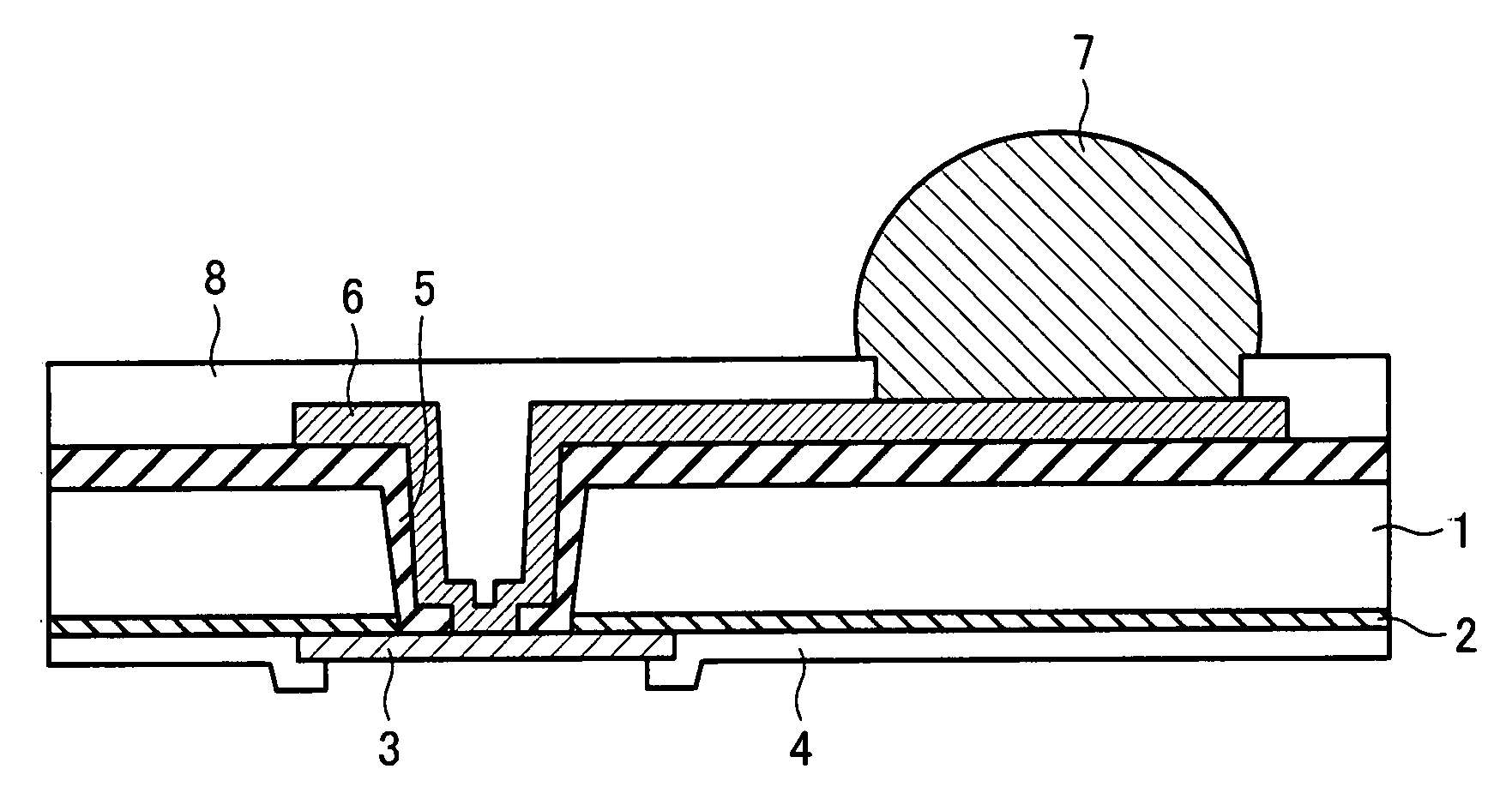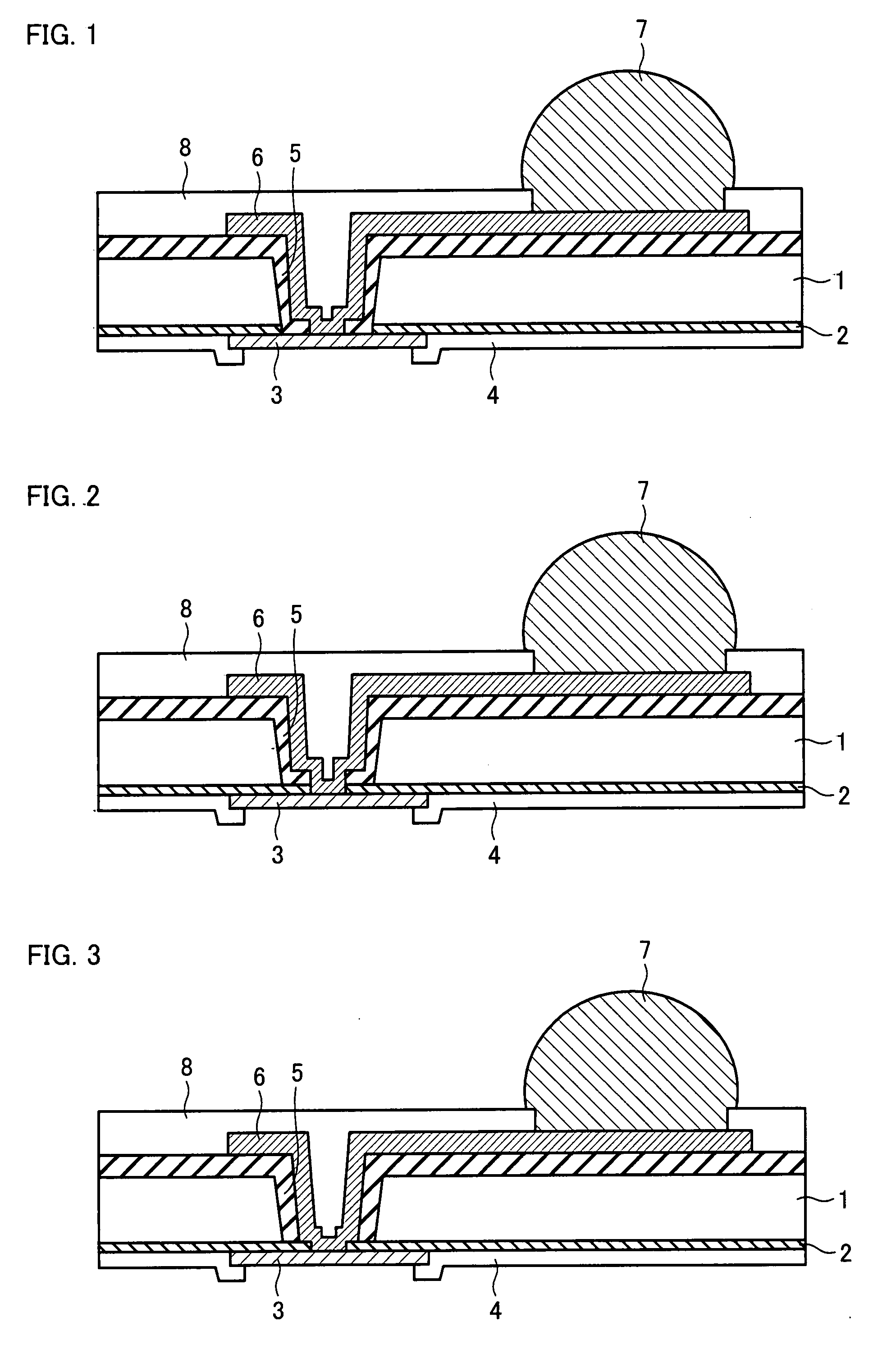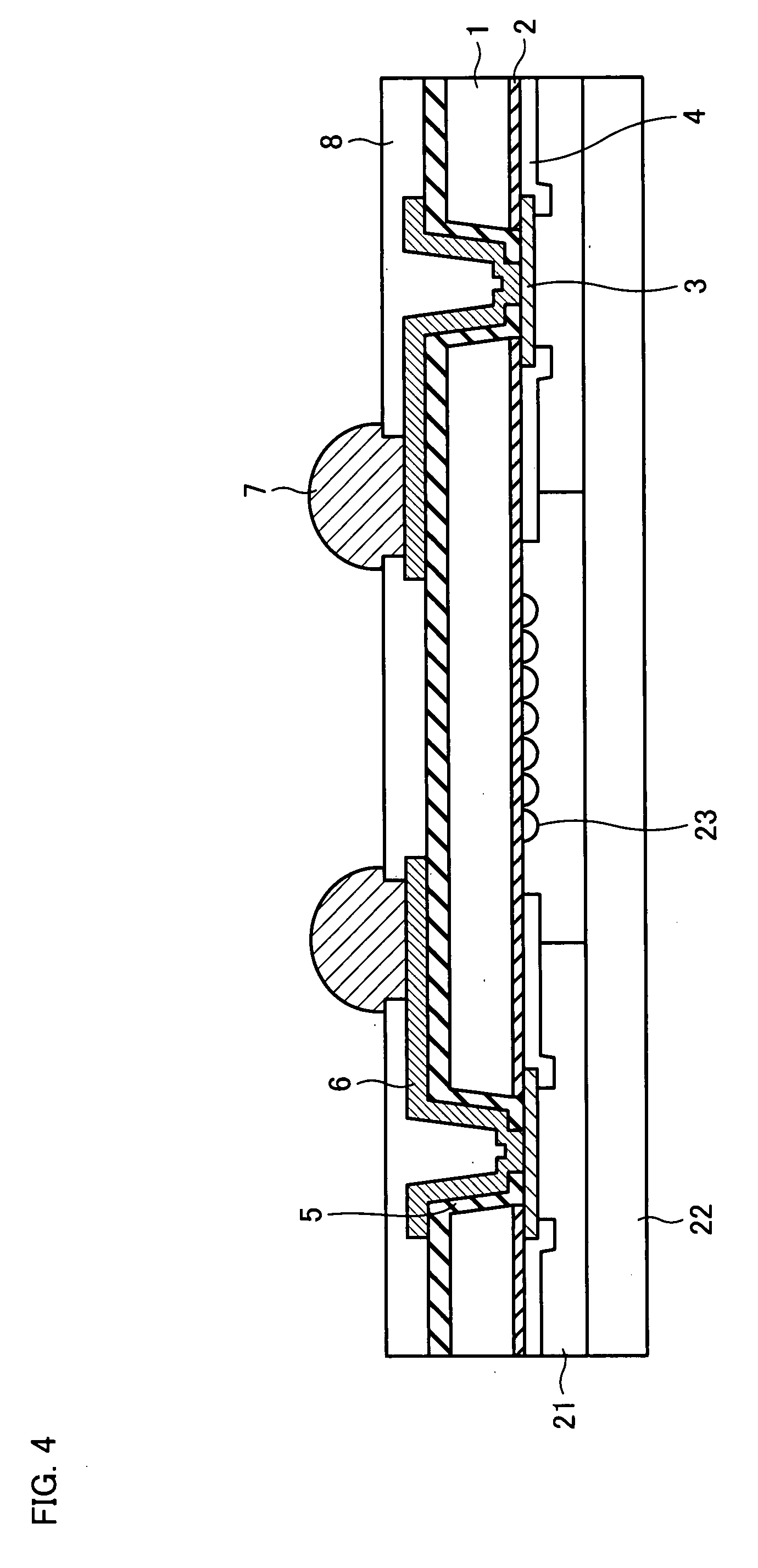Semiconductor apparatus and method of producing the same
- Summary
- Abstract
- Description
- Claims
- Application Information
AI Technical Summary
Benefits of technology
Problems solved by technology
Method used
Image
Examples
embodiment 1
[0071]FIG. 1 is a cross section showing a structure of the vicinity of an electrode section of a semiconductor apparatus in accordance with the present embodiment.
[0072]As shown in FIG. 1, in the semiconductor apparatus of the present embodiment, a metal wiring layer of single-layer or multi-layer (generally multi-layer) is formed on a first surface (front surface) of a semiconductor substrate 1 via a first insulating film 2. Although not shown in the figure, a semiconductor device is connected to a predetermined terminal on the metal wiring layer. An electrode pad 3 is formed for the semiconductor device to receive and supply a signal. FIG. 1 only shows the electrode pad 3, which is included in the metal wiring layer. A protection film 4 made of an oxide film or a nitride film is formed on the metal wiring layer. Materials of the semiconductor substrate 1 are not particularly limited, and any publicly-known substrates may be used. For example a Si-substrate or a GaAs-substrate may ...
embodiment 2
[0098]The following describes a semiconductor apparatus of the present embodiment. Structures other than those described in the present embodiment are same as those of Embodiment 1. For convenience in description, components having the same functions as those of the components shown in the figures of Embodiment 1 are given the same reference numerals, and description thereof is omitted.
[0099]FIG. 2 is a cross section of a structure of the vicinity of an electrode section of a semiconductor apparatus of another embodiment of the present invention.
[0100]As shown in FIG. 2, in the semiconductor apparatus of the present embodiment, a through electrode is formed in an area where an electrode pad 3 is formed. Accordingly, in a semiconductor substrate 1, a through hole is formed immediately above the electrode pad 3. A second insulating film 5 is formed to cover a side surface of the through hole and a second surface of the semiconductor substrate 1. Further, a first insulating film 2 and ...
embodiment 3
[0110]The following describes a semiconductor apparatus of the present embodiment. Structures other than those described in the present embodiment are same as those of Embodiment 1. For convenience in description, components having the same functions as those of the components shown in the figures of Embodiment 1 are given the same reference numerals, and description thereof is omitted.
[0111]FIG. 3 is a cross section of a structure of the vicinity of an electrode section of a semiconductor apparatus in accordance with another embodiment of the present invention.
[0112]As shown in FIG. 3, in the semiconductor apparatus of the present embodiment, a through electrode is formed in an area where an electrode pad 3 is formed. Accordingly, in a semiconductor substrate 1, a through hole is formed immediately above the electrode pad 3. The second insulating film 5 is formed to cover the side surface of the through hole and a second surface of the semiconductor substrate 1. The first insulatin...
PUM
 Login to View More
Login to View More Abstract
Description
Claims
Application Information
 Login to View More
Login to View More - R&D
- Intellectual Property
- Life Sciences
- Materials
- Tech Scout
- Unparalleled Data Quality
- Higher Quality Content
- 60% Fewer Hallucinations
Browse by: Latest US Patents, China's latest patents, Technical Efficacy Thesaurus, Application Domain, Technology Topic, Popular Technical Reports.
© 2025 PatSnap. All rights reserved.Legal|Privacy policy|Modern Slavery Act Transparency Statement|Sitemap|About US| Contact US: help@patsnap.com



